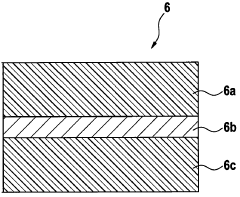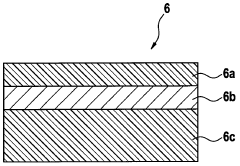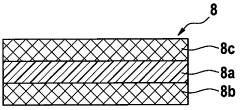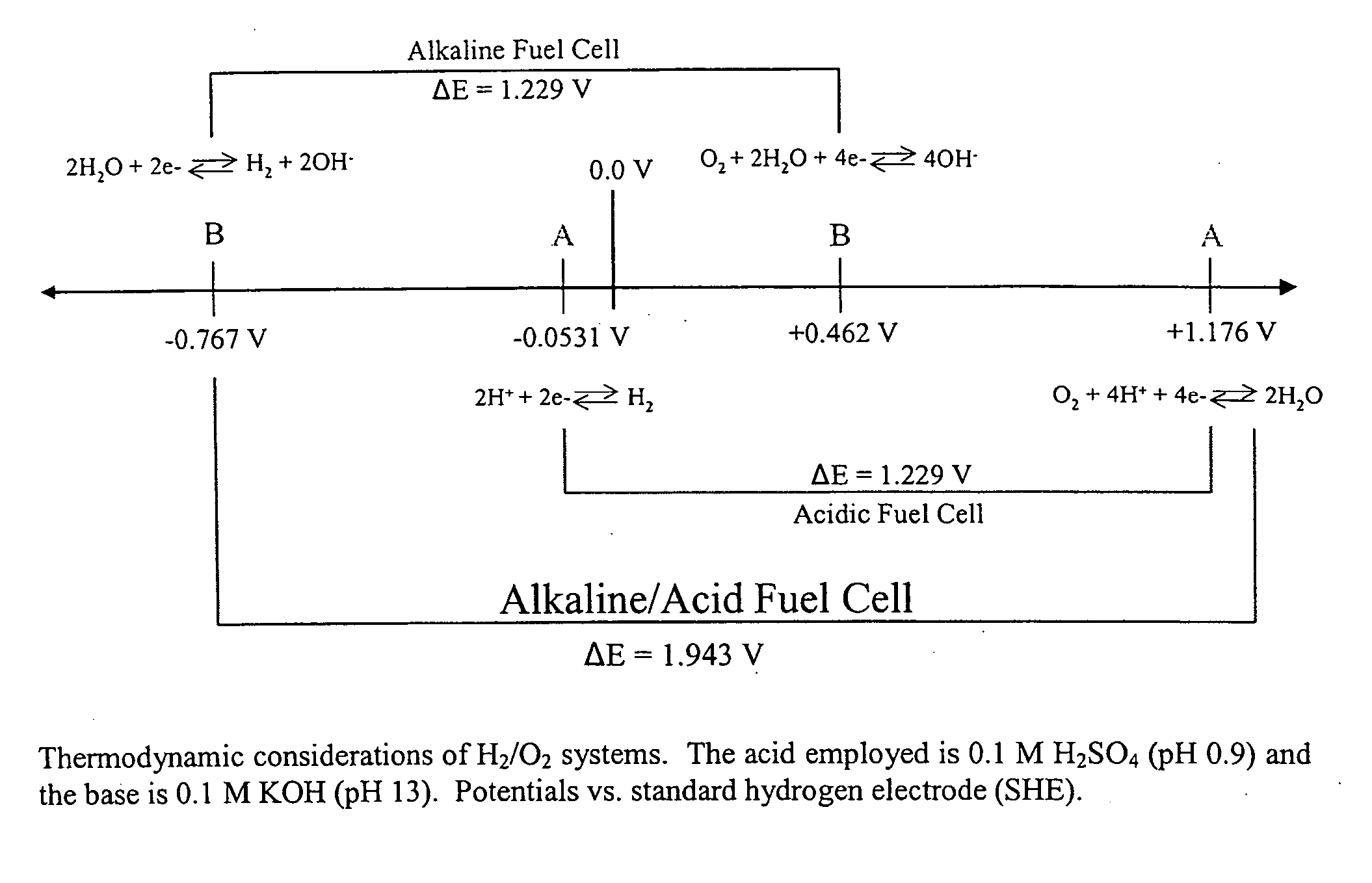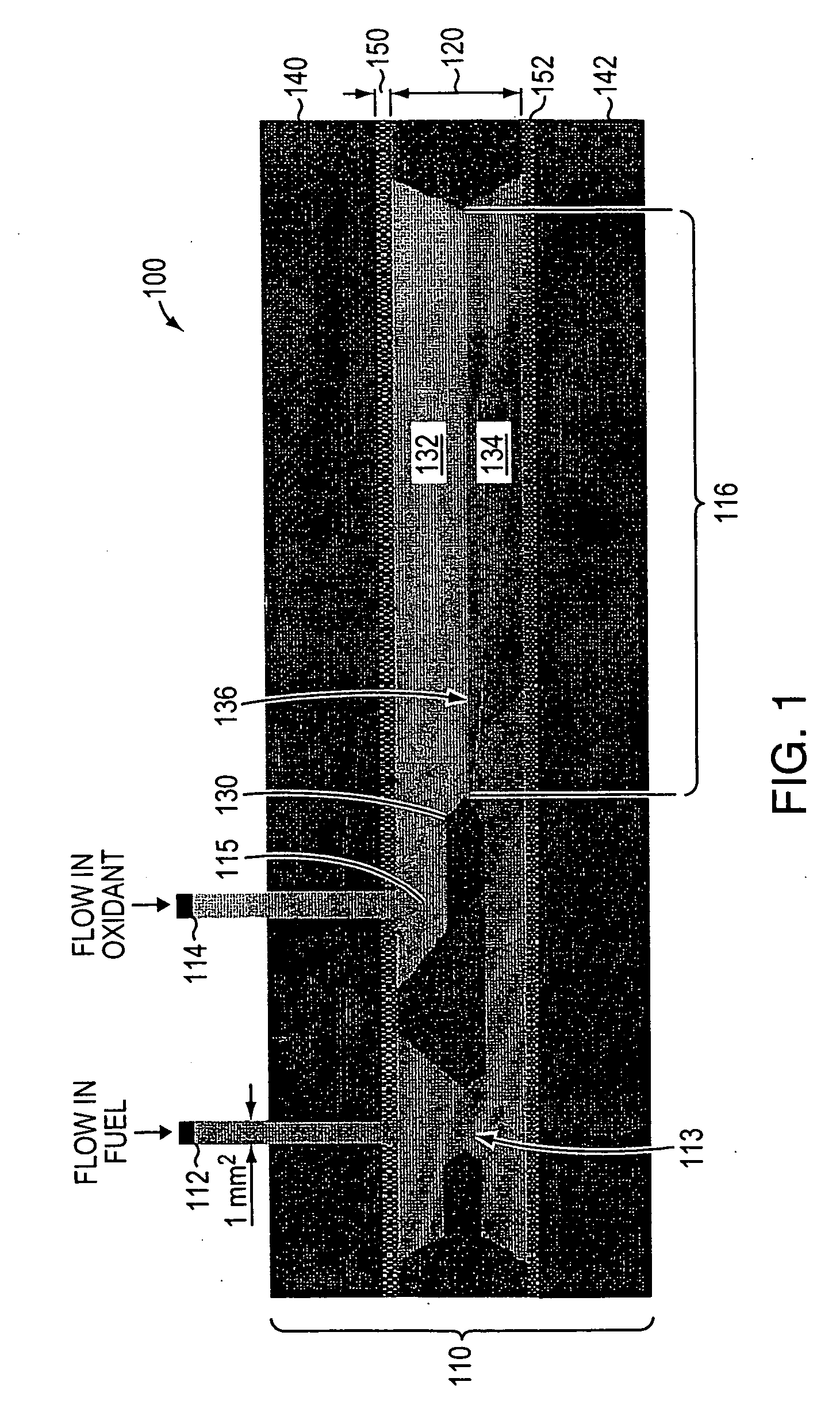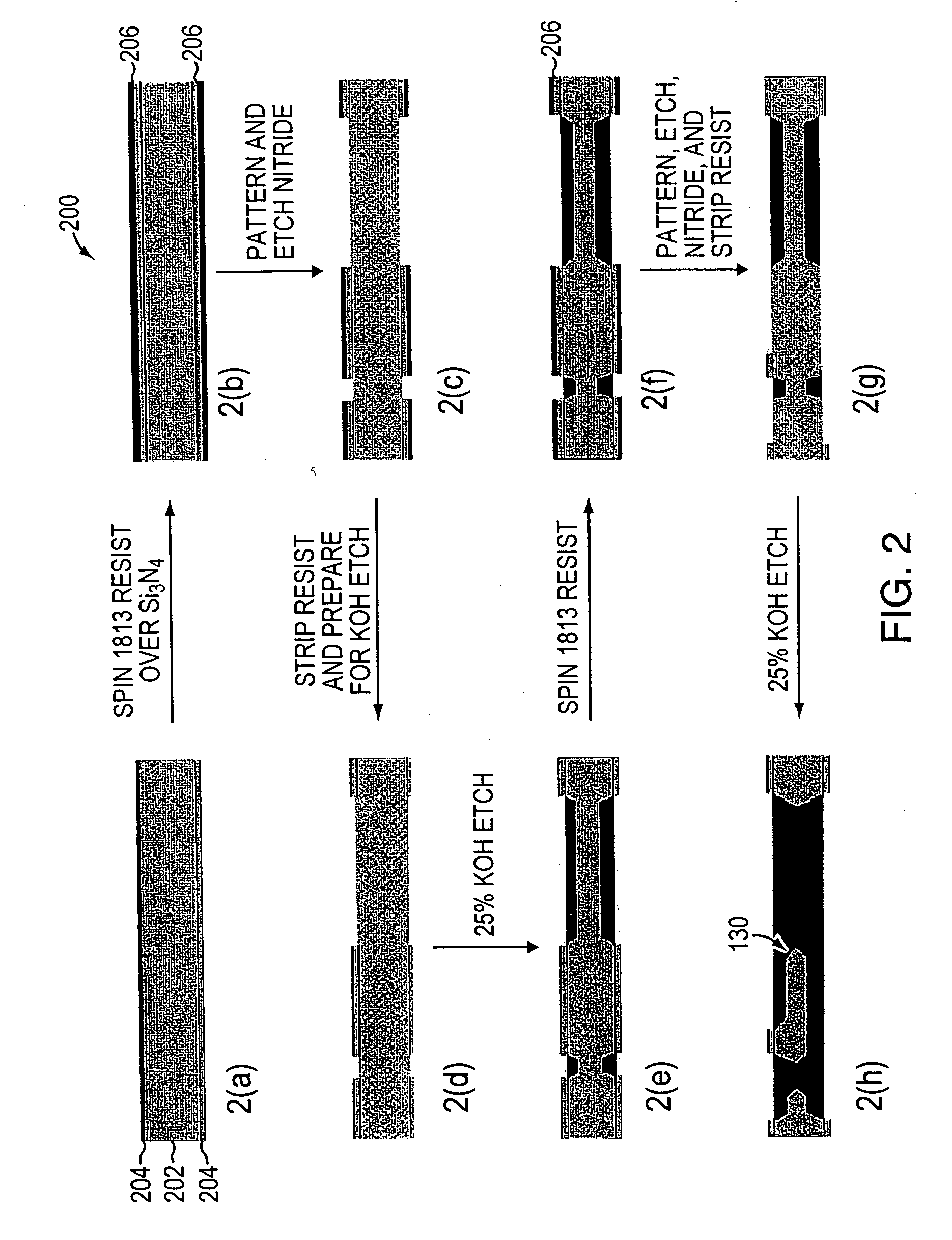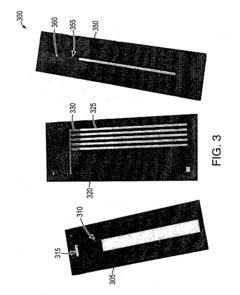Intelligent, Adaptive Structures Leveraging Laminar Flow Dynamics
JUL 10, 20259 MIN READ
Generate Your Research Report Instantly with AI Agent
Patsnap Eureka helps you evaluate technical feasibility & market potential.
Laminar Flow Dynamics in Adaptive Structures
Laminar flow dynamics play a crucial role in the development of intelligent, adaptive structures. This phenomenon, characterized by smooth and predictable fluid motion, offers unique opportunities for enhancing structural performance and efficiency. In adaptive structures, laminar flow can be leveraged to create dynamic, responsive systems that adjust to changing environmental conditions or operational requirements.
The fundamental principle of laminar flow in adaptive structures lies in its ability to minimize turbulence and energy loss. By maintaining a smooth flow of fluid or air over surfaces, these structures can reduce drag, improve heat transfer, and optimize overall system performance. This is particularly relevant in applications such as aerospace, where even small improvements in aerodynamics can lead to significant gains in fuel efficiency and flight performance.
One of the key aspects of laminar flow dynamics in adaptive structures is the use of smart materials and active flow control techniques. These technologies allow for real-time adjustments to surface geometries, enabling structures to maintain laminar flow conditions across a wide range of operating parameters. For instance, shape-memory alloys or piezoelectric materials can be integrated into aircraft wings or wind turbine blades to modify their profiles in response to changing wind conditions, thereby preserving laminar flow and maximizing efficiency.
The integration of sensors and actuators is another critical component in harnessing laminar flow dynamics. Advanced sensing technologies can detect minute changes in flow patterns, pressure distributions, or temperature gradients. This data is then processed by intelligent control systems, which activate appropriate actuators to modify the structure's shape or surface characteristics, ensuring the maintenance of laminar flow.
Computational fluid dynamics (CFD) simulations play a vital role in the design and optimization of adaptive structures leveraging laminar flow. These sophisticated modeling tools allow engineers to predict flow behavior under various conditions and design structures that can effectively maintain laminar flow. By coupling CFD with structural analysis and control system simulations, researchers can develop holistic models of adaptive systems that account for the complex interactions between fluid dynamics and structural responses.
The application of laminar flow dynamics in adaptive structures extends beyond traditional aerospace applications. In fields such as energy harvesting, laminar flow principles are being applied to develop more efficient wind and hydroelectric turbines. By dynamically adjusting blade geometries to maintain laminar flow conditions, these adaptive turbines can extract energy more efficiently across a broader range of wind or water speeds.
As research in this field progresses, we can expect to see increasingly sophisticated adaptive structures that seamlessly integrate laminar flow dynamics with advanced materials, sensors, and control systems. These innovations promise to revolutionize various industries, offering unprecedented levels of efficiency, performance, and adaptability in engineered systems.
The fundamental principle of laminar flow in adaptive structures lies in its ability to minimize turbulence and energy loss. By maintaining a smooth flow of fluid or air over surfaces, these structures can reduce drag, improve heat transfer, and optimize overall system performance. This is particularly relevant in applications such as aerospace, where even small improvements in aerodynamics can lead to significant gains in fuel efficiency and flight performance.
One of the key aspects of laminar flow dynamics in adaptive structures is the use of smart materials and active flow control techniques. These technologies allow for real-time adjustments to surface geometries, enabling structures to maintain laminar flow conditions across a wide range of operating parameters. For instance, shape-memory alloys or piezoelectric materials can be integrated into aircraft wings or wind turbine blades to modify their profiles in response to changing wind conditions, thereby preserving laminar flow and maximizing efficiency.
The integration of sensors and actuators is another critical component in harnessing laminar flow dynamics. Advanced sensing technologies can detect minute changes in flow patterns, pressure distributions, or temperature gradients. This data is then processed by intelligent control systems, which activate appropriate actuators to modify the structure's shape or surface characteristics, ensuring the maintenance of laminar flow.
Computational fluid dynamics (CFD) simulations play a vital role in the design and optimization of adaptive structures leveraging laminar flow. These sophisticated modeling tools allow engineers to predict flow behavior under various conditions and design structures that can effectively maintain laminar flow. By coupling CFD with structural analysis and control system simulations, researchers can develop holistic models of adaptive systems that account for the complex interactions between fluid dynamics and structural responses.
The application of laminar flow dynamics in adaptive structures extends beyond traditional aerospace applications. In fields such as energy harvesting, laminar flow principles are being applied to develop more efficient wind and hydroelectric turbines. By dynamically adjusting blade geometries to maintain laminar flow conditions, these adaptive turbines can extract energy more efficiently across a broader range of wind or water speeds.
As research in this field progresses, we can expect to see increasingly sophisticated adaptive structures that seamlessly integrate laminar flow dynamics with advanced materials, sensors, and control systems. These innovations promise to revolutionize various industries, offering unprecedented levels of efficiency, performance, and adaptability in engineered systems.
Market Demand for Intelligent Structures
The market demand for intelligent, adaptive structures leveraging laminar flow dynamics has been steadily growing across various industries. This innovative technology offers significant potential for improving efficiency, reducing energy consumption, and enhancing performance in applications ranging from aerospace to automotive and marine industries.
In the aerospace sector, there is a strong demand for intelligent structures that can adapt to changing flight conditions. Airlines and aircraft manufacturers are increasingly interested in technologies that can reduce drag and improve fuel efficiency. Intelligent structures that can dynamically adjust their shape based on laminar flow conditions could potentially lead to substantial fuel savings and reduced operating costs. This demand is driven by both economic factors and increasing pressure to reduce carbon emissions in the aviation industry.
The automotive industry is another key market for intelligent, adaptive structures. As vehicle manufacturers strive to improve fuel efficiency and aerodynamic performance, there is growing interest in smart materials and structures that can adapt to different driving conditions. The ability to optimize vehicle shape in real-time based on laminar flow dynamics could lead to significant improvements in energy efficiency and overall performance.
In the marine sector, there is a rising demand for intelligent hull designs that can adapt to varying water conditions. Shipping companies are seeking ways to reduce fuel consumption and improve vessel efficiency. Adaptive structures that can optimize hull shape based on laminar flow dynamics could potentially lead to substantial cost savings and improved performance in maritime transportation.
The renewable energy sector, particularly wind energy, is also showing increased interest in intelligent, adaptive structures. Wind turbine manufacturers are exploring ways to improve energy capture and reduce structural loads through adaptive blade designs. Structures that can dynamically adjust to changing wind conditions based on laminar flow principles could potentially increase energy output and extend the lifespan of wind turbines.
Furthermore, there is growing demand for intelligent structures in civil engineering applications. Smart buildings that can adapt to environmental conditions, including wind loads, are gaining attention in the construction industry. The ability to dynamically adjust building structures based on laminar flow dynamics could lead to improved energy efficiency and enhanced structural resilience.
The market for intelligent, adaptive structures is expected to expand further as advancements in materials science, sensor technology, and artificial intelligence continue to drive innovation in this field. As industries increasingly prioritize sustainability and efficiency, the demand for technologies that can optimize performance through intelligent adaptation to environmental conditions is likely to grow significantly in the coming years.
In the aerospace sector, there is a strong demand for intelligent structures that can adapt to changing flight conditions. Airlines and aircraft manufacturers are increasingly interested in technologies that can reduce drag and improve fuel efficiency. Intelligent structures that can dynamically adjust their shape based on laminar flow conditions could potentially lead to substantial fuel savings and reduced operating costs. This demand is driven by both economic factors and increasing pressure to reduce carbon emissions in the aviation industry.
The automotive industry is another key market for intelligent, adaptive structures. As vehicle manufacturers strive to improve fuel efficiency and aerodynamic performance, there is growing interest in smart materials and structures that can adapt to different driving conditions. The ability to optimize vehicle shape in real-time based on laminar flow dynamics could lead to significant improvements in energy efficiency and overall performance.
In the marine sector, there is a rising demand for intelligent hull designs that can adapt to varying water conditions. Shipping companies are seeking ways to reduce fuel consumption and improve vessel efficiency. Adaptive structures that can optimize hull shape based on laminar flow dynamics could potentially lead to substantial cost savings and improved performance in maritime transportation.
The renewable energy sector, particularly wind energy, is also showing increased interest in intelligent, adaptive structures. Wind turbine manufacturers are exploring ways to improve energy capture and reduce structural loads through adaptive blade designs. Structures that can dynamically adjust to changing wind conditions based on laminar flow principles could potentially increase energy output and extend the lifespan of wind turbines.
Furthermore, there is growing demand for intelligent structures in civil engineering applications. Smart buildings that can adapt to environmental conditions, including wind loads, are gaining attention in the construction industry. The ability to dynamically adjust building structures based on laminar flow dynamics could lead to improved energy efficiency and enhanced structural resilience.
The market for intelligent, adaptive structures is expected to expand further as advancements in materials science, sensor technology, and artificial intelligence continue to drive innovation in this field. As industries increasingly prioritize sustainability and efficiency, the demand for technologies that can optimize performance through intelligent adaptation to environmental conditions is likely to grow significantly in the coming years.
Current Challenges in Adaptive Structures
The field of intelligent, adaptive structures leveraging laminar flow dynamics faces several significant challenges that hinder widespread implementation and optimal performance. One of the primary obstacles is the complexity of integrating multiple systems seamlessly. Adaptive structures require a sophisticated interplay between sensors, actuators, control systems, and the structural elements themselves. Ensuring these components work in harmony while maintaining the desired laminar flow characteristics presents a formidable engineering challenge.
Material limitations pose another substantial hurdle. The materials used in adaptive structures must possess specific properties, such as high strength-to-weight ratios, flexibility, and durability, while also being compatible with the requirements of laminar flow. Developing materials that can meet these diverse and often conflicting demands remains an ongoing challenge for researchers and engineers in the field.
The dynamic nature of fluid-structure interactions further complicates the design and implementation of adaptive structures. Predicting and controlling the behavior of structures under varying flow conditions requires advanced modeling techniques and real-time adaptive control algorithms. Current computational models often struggle to accurately capture the full complexity of these interactions, particularly in rapidly changing environments.
Energy efficiency is another critical concern. Adaptive structures typically require continuous power input to maintain their shape or properties. Developing energy-efficient actuation mechanisms and control strategies that can operate effectively while minimizing power consumption is crucial for the practical implementation of these systems, especially in applications with limited energy resources.
Scalability presents yet another challenge. Many adaptive structure concepts have been demonstrated at small scales or in controlled laboratory environments. However, scaling these technologies up to practical, real-world applications often reveals unforeseen complications. Issues such as manufacturing complexity, cost-effectiveness, and reliability at larger scales need to be addressed to make these structures viable for widespread use.
Lastly, the interdisciplinary nature of this field creates challenges in terms of knowledge integration and collaboration. Effective development of intelligent, adaptive structures requires expertise from various domains, including materials science, fluid dynamics, control theory, and structural engineering. Bridging the gaps between these disciplines and fostering effective collaboration remains an ongoing challenge in advancing the field.
Material limitations pose another substantial hurdle. The materials used in adaptive structures must possess specific properties, such as high strength-to-weight ratios, flexibility, and durability, while also being compatible with the requirements of laminar flow. Developing materials that can meet these diverse and often conflicting demands remains an ongoing challenge for researchers and engineers in the field.
The dynamic nature of fluid-structure interactions further complicates the design and implementation of adaptive structures. Predicting and controlling the behavior of structures under varying flow conditions requires advanced modeling techniques and real-time adaptive control algorithms. Current computational models often struggle to accurately capture the full complexity of these interactions, particularly in rapidly changing environments.
Energy efficiency is another critical concern. Adaptive structures typically require continuous power input to maintain their shape or properties. Developing energy-efficient actuation mechanisms and control strategies that can operate effectively while minimizing power consumption is crucial for the practical implementation of these systems, especially in applications with limited energy resources.
Scalability presents yet another challenge. Many adaptive structure concepts have been demonstrated at small scales or in controlled laboratory environments. However, scaling these technologies up to practical, real-world applications often reveals unforeseen complications. Issues such as manufacturing complexity, cost-effectiveness, and reliability at larger scales need to be addressed to make these structures viable for widespread use.
Lastly, the interdisciplinary nature of this field creates challenges in terms of knowledge integration and collaboration. Effective development of intelligent, adaptive structures requires expertise from various domains, including materials science, fluid dynamics, control theory, and structural engineering. Bridging the gaps between these disciplines and fostering effective collaboration remains an ongoing challenge in advancing the field.
Existing Laminar Flow Control Solutions
01 Adaptive structures for laminar flow control
Intelligent structures that can adapt to changing flow conditions to maintain laminar flow. These systems use sensors and actuators to modify surface characteristics or shape, optimizing aerodynamic performance in real-time.- Adaptive structures for flow control: Intelligent structures that can adapt to changing flow conditions to maintain laminar flow. These systems use sensors and actuators to modify surface properties or geometry in real-time, optimizing aerodynamic performance and reducing drag.
- Laminar flow measurement and analysis: Advanced techniques for measuring and analyzing laminar flow dynamics, including optical methods, pressure sensors, and computational fluid dynamics simulations. These methods provide detailed insights into flow behavior and help in designing more efficient structures.
- Smart materials for flow manipulation: Utilization of smart materials, such as shape memory alloys or piezoelectric materials, in adaptive structures. These materials can change their properties in response to external stimuli, allowing for precise control of surface characteristics and flow dynamics.
- Micro-scale surface modifications: Development of micro-scale surface modifications, such as riblets or dimples, that can be dynamically adjusted to maintain laminar flow under various conditions. These modifications can significantly reduce drag and improve overall aerodynamic efficiency.
- Integration of AI and machine learning: Incorporation of artificial intelligence and machine learning algorithms to predict and optimize laminar flow dynamics. These systems can analyze complex flow patterns and make real-time adjustments to maintain optimal performance across a wide range of operating conditions.
02 Flow dynamics measurement and analysis
Advanced techniques for measuring and analyzing laminar flow dynamics in intelligent structures. This includes the use of optical sensors, pressure sensors, and computational fluid dynamics (CFD) simulations to understand and optimize flow behavior.Expand Specific Solutions03 Smart materials for flow control
Integration of smart materials, such as shape memory alloys or piezoelectric materials, into adaptive structures. These materials can change their properties in response to external stimuli, allowing for precise control of surface geometry and flow characteristics.Expand Specific Solutions04 Micro-scale surface modifications
Development of micro-scale surface modifications, such as riblets or dimples, that can be dynamically adjusted to influence boundary layer behavior and reduce drag in various flow conditions.Expand Specific Solutions05 Intelligent control systems for flow optimization
Advanced control systems that use machine learning algorithms and real-time data processing to optimize laminar flow dynamics. These systems can predict and respond to changes in flow conditions, adjusting the structure's properties accordingly.Expand Specific Solutions
Key Players in Adaptive Materials Industry
The research on intelligent, adaptive structures leveraging laminar flow dynamics is in an emerging phase, with significant potential for growth. The market is still developing, with a projected increase in size as applications in aerospace, automotive, and energy sectors expand. Technologically, it's in a transitional stage from academic research to industrial application. Leading institutions like Beihang University, École Polytechnique Fédérale de Lausanne, and California Institute of Technology are at the forefront of academic research. Companies such as Aerosol Dynamics Inc and Exxonmobil Upstream Research Co. are exploring commercial applications, indicating a gradual shift towards industry adoption. The involvement of diverse players suggests a competitive landscape with opportunities for innovation and collaboration across sectors.
École Polytechnique Fédérale de Lausanne
Technical Solution: EPFL's approach to intelligent, adaptive structures leveraging laminar flow dynamics combines advanced fluid mechanics with smart materials and control systems. They have developed adaptive wing designs that can morph in response to changing flow conditions, significantly improving aerodynamic efficiency[2]. EPFL researchers have also created self-regulating microfluidic systems that use laminar flow properties to perform complex fluid manipulation tasks without external control[4]. Their work extends to bio-inspired adaptive structures that mimic natural systems, such as fish scales, to reduce drag and enhance flow control in various applications[6].
Strengths: Strong focus on biomimetic design, excellent integration of fluid dynamics and materials science, and extensive international collaborations. Weaknesses: Potential challenges in translating complex bio-inspired designs into practical, manufacturable solutions.
California Institute of Technology
Technical Solution: Caltech's research on intelligent, adaptive structures leveraging laminar flow dynamics focuses on developing smart materials and systems that can actively respond to fluid flow conditions. They have pioneered the use of shape memory alloys and piezoelectric materials to create adaptive structures that can modify their geometry in real-time to optimize laminar flow[1]. Their approach integrates advanced sensors and machine learning algorithms to detect flow patterns and trigger appropriate structural responses[3]. Caltech has also developed novel microfluidic devices that can manipulate laminar flow at the microscale, enabling precise control over fluid behavior in lab-on-a-chip applications[5].
Strengths: Cutting-edge materials science expertise, strong interdisciplinary collaboration, and access to advanced research facilities. Weaknesses: High development costs and potential challenges in scaling up technologies for industrial applications.
Core Innovations in Flow-Structure Interaction
Laminar structure providing adaptive thermal insulation
PatentWO2012100840A1
Innovation
- A laminar structure with a gas generating agent that increases gas pressure inside an inner cavity upon temperature rise, causing the distance between layers to increase and enhancing thermal insulation, mimicking intumescent behavior but with a different mechanism, allowing for adjustable and reversible thermal insulation based on temperature.
Dual electrolyte membraneless microchannel fuel cells
PatentInactiveUS20060228622A1
Innovation
- The development of planar membraneless microchannel fuel cells using laminar flow regimes between two parallel plates with a microscopic separation, eliminating the need for a PEM by creating a diffusive boundary layer between fuel and oxidant streams, and utilizing dual electrolyte systems to increase the interface area and power generation.
Environmental Impact of Intelligent Structures
The environmental impact of intelligent, adaptive structures leveraging laminar flow dynamics is a crucial consideration in their development and implementation. These structures, designed to respond dynamically to environmental conditions, have the potential to significantly reduce energy consumption and improve overall efficiency in various applications.
One of the primary environmental benefits of these structures is their ability to optimize airflow and reduce drag. By adapting to changing conditions and maintaining laminar flow, they can minimize turbulence and energy loss. This translates to reduced fuel consumption in transportation applications, such as aircraft and vehicles, leading to lower greenhouse gas emissions and improved air quality.
In building design, intelligent structures that leverage laminar flow dynamics can enhance natural ventilation and thermal regulation. By adjusting their form or surface properties in response to environmental factors, these structures can reduce the need for artificial heating, cooling, and ventilation systems. This results in decreased energy consumption and a lower carbon footprint for buildings.
The use of adaptive materials in these structures also contributes to their environmental sustainability. Many of these materials are designed to be lightweight and durable, reducing the overall resource consumption in their production and maintenance. Additionally, some adaptive materials have self-healing properties, which can extend the lifespan of structures and reduce the need for replacements or repairs.
However, the environmental impact of intelligent structures is not entirely positive. The production of advanced materials and sensors required for these structures may involve energy-intensive processes and the use of rare or potentially harmful substances. The disposal or recycling of these components at the end of their life cycle also presents environmental challenges that need to be addressed.
Furthermore, the increased complexity of these structures may lead to higher initial resource consumption during manufacturing and construction. This upfront environmental cost needs to be balanced against the long-term benefits of improved efficiency and reduced operational impact.
As research in this field progresses, there is a growing focus on developing more sustainable materials and manufacturing processes for intelligent, adaptive structures. This includes exploring bio-inspired materials and designs that mimic natural systems, which are inherently efficient and environmentally compatible. The integration of renewable energy generation into these structures, such as incorporating flexible solar cells or piezoelectric materials, is another avenue being explored to enhance their environmental benefits.
In conclusion, while intelligent, adaptive structures leveraging laminar flow dynamics offer significant potential for reducing environmental impact through improved efficiency and reduced energy consumption, careful consideration must be given to their entire lifecycle. Ongoing research and development efforts are crucial to maximize the environmental benefits of these structures while minimizing any negative impacts associated with their production and disposal.
One of the primary environmental benefits of these structures is their ability to optimize airflow and reduce drag. By adapting to changing conditions and maintaining laminar flow, they can minimize turbulence and energy loss. This translates to reduced fuel consumption in transportation applications, such as aircraft and vehicles, leading to lower greenhouse gas emissions and improved air quality.
In building design, intelligent structures that leverage laminar flow dynamics can enhance natural ventilation and thermal regulation. By adjusting their form or surface properties in response to environmental factors, these structures can reduce the need for artificial heating, cooling, and ventilation systems. This results in decreased energy consumption and a lower carbon footprint for buildings.
The use of adaptive materials in these structures also contributes to their environmental sustainability. Many of these materials are designed to be lightweight and durable, reducing the overall resource consumption in their production and maintenance. Additionally, some adaptive materials have self-healing properties, which can extend the lifespan of structures and reduce the need for replacements or repairs.
However, the environmental impact of intelligent structures is not entirely positive. The production of advanced materials and sensors required for these structures may involve energy-intensive processes and the use of rare or potentially harmful substances. The disposal or recycling of these components at the end of their life cycle also presents environmental challenges that need to be addressed.
Furthermore, the increased complexity of these structures may lead to higher initial resource consumption during manufacturing and construction. This upfront environmental cost needs to be balanced against the long-term benefits of improved efficiency and reduced operational impact.
As research in this field progresses, there is a growing focus on developing more sustainable materials and manufacturing processes for intelligent, adaptive structures. This includes exploring bio-inspired materials and designs that mimic natural systems, which are inherently efficient and environmentally compatible. The integration of renewable energy generation into these structures, such as incorporating flexible solar cells or piezoelectric materials, is another avenue being explored to enhance their environmental benefits.
In conclusion, while intelligent, adaptive structures leveraging laminar flow dynamics offer significant potential for reducing environmental impact through improved efficiency and reduced energy consumption, careful consideration must be given to their entire lifecycle. Ongoing research and development efforts are crucial to maximize the environmental benefits of these structures while minimizing any negative impacts associated with their production and disposal.
Biomimetic Approaches in Adaptive Design
Biomimetic approaches in adaptive design draw inspiration from nature's ingenious solutions to create intelligent, adaptive structures that leverage laminar flow dynamics. This field of research combines principles from biology, engineering, and fluid mechanics to develop innovative systems that can respond dynamically to environmental changes.
One of the primary sources of inspiration for adaptive structures is the morphology and behavior of marine organisms. Fish, for instance, have evolved streamlined bodies and flexible scales that allow them to manipulate the flow of water around them, reducing drag and improving efficiency. By studying these natural adaptations, researchers are developing synthetic materials and structures that can mimic the surface properties of fish scales, actively altering their texture and shape to optimize laminar flow in various conditions.
Another area of focus is the study of plant movements, particularly those that respond to environmental stimuli. The Venus flytrap, for example, demonstrates rapid closure mechanisms triggered by touch sensors. This principle has inspired the development of adaptive structures that can quickly alter their configuration in response to changes in fluid flow, potentially leading to more efficient and responsive designs in aerospace and marine applications.
Biomimetic approaches also extend to the cellular level, where researchers are exploring how the internal structures of organisms can inform the design of adaptive materials. The cytoskeleton of cells, which provides both structure and adaptability, has led to the development of smart materials that can change their properties in response to external stimuli, such as temperature or electrical signals. These materials have the potential to create structures that can actively modify their shape and surface characteristics to maintain optimal laminar flow conditions.
The integration of sensory systems found in nature is another crucial aspect of biomimetic adaptive design. Many organisms possess highly sensitive mechanoreceptors that allow them to detect and respond to changes in their environment. By incorporating similar sensing capabilities into engineered structures, researchers aim to create systems that can autonomously adjust to varying flow conditions, maintaining laminar flow and minimizing energy loss.
Furthermore, the study of collective behavior in organisms, such as schools of fish or flocks of birds, is informing the development of distributed adaptive systems. These systems consist of multiple interconnected units that can work together to optimize overall performance, potentially leading to more robust and efficient structures capable of maintaining laminar flow across larger scales.
One of the primary sources of inspiration for adaptive structures is the morphology and behavior of marine organisms. Fish, for instance, have evolved streamlined bodies and flexible scales that allow them to manipulate the flow of water around them, reducing drag and improving efficiency. By studying these natural adaptations, researchers are developing synthetic materials and structures that can mimic the surface properties of fish scales, actively altering their texture and shape to optimize laminar flow in various conditions.
Another area of focus is the study of plant movements, particularly those that respond to environmental stimuli. The Venus flytrap, for example, demonstrates rapid closure mechanisms triggered by touch sensors. This principle has inspired the development of adaptive structures that can quickly alter their configuration in response to changes in fluid flow, potentially leading to more efficient and responsive designs in aerospace and marine applications.
Biomimetic approaches also extend to the cellular level, where researchers are exploring how the internal structures of organisms can inform the design of adaptive materials. The cytoskeleton of cells, which provides both structure and adaptability, has led to the development of smart materials that can change their properties in response to external stimuli, such as temperature or electrical signals. These materials have the potential to create structures that can actively modify their shape and surface characteristics to maintain optimal laminar flow conditions.
The integration of sensory systems found in nature is another crucial aspect of biomimetic adaptive design. Many organisms possess highly sensitive mechanoreceptors that allow them to detect and respond to changes in their environment. By incorporating similar sensing capabilities into engineered structures, researchers aim to create systems that can autonomously adjust to varying flow conditions, maintaining laminar flow and minimizing energy loss.
Furthermore, the study of collective behavior in organisms, such as schools of fish or flocks of birds, is informing the development of distributed adaptive systems. These systems consist of multiple interconnected units that can work together to optimize overall performance, potentially leading to more robust and efficient structures capable of maintaining laminar flow across larger scales.
Unlock deeper insights with Patsnap Eureka Quick Research — get a full tech report to explore trends and direct your research. Try now!
Generate Your Research Report Instantly with AI Agent
Supercharge your innovation with Patsnap Eureka AI Agent Platform!
